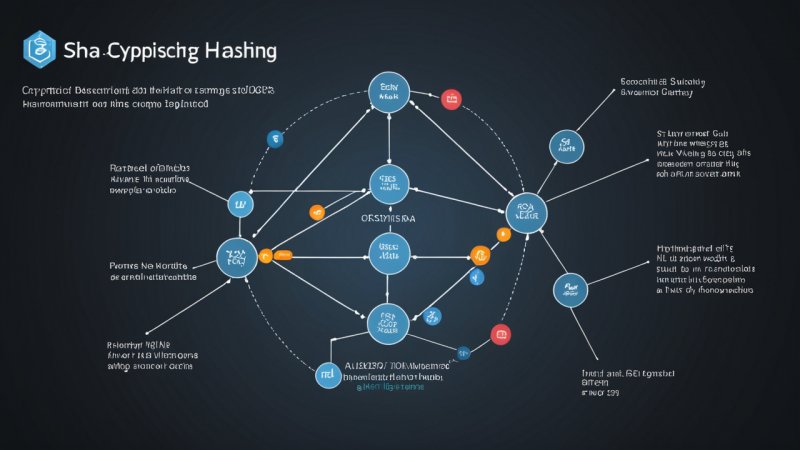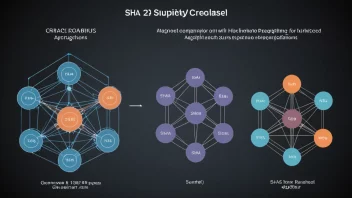Cryptographic hashing algorithms play a crucial role in the security of digital information, particularly in the realms of blockchain technology, data integrity, and password storage. Among the most prominent hashing algorithms are SHA-256 and SHA-3, each offering unique characteristics and advantages. This article aims to provide a comprehensive comparison between SHA-256 and SHA-3, exploring their design, functionality, applications, and overall effectiveness.
Overview of SHA-256
SHA-256, or Secure Hash Algorithm 256-bit, is part of the SHA-2 family, designed by the National Security Agency (NSA) in the United States. It produces a fixed-size 256-bit hash value from input data, regardless of its size. SHA-256 is widely used in various applications, particularly in blockchain technology, where it ensures the integrity and security of data.
Strengths of SHA-256
- Security: SHA-256 is considered highly secure, with no known vulnerabilities that can be exploited reasonably. Its robustness makes it a preferred choice in blockchain applications, such as Bitcoin.
- Widespread Adoption: Due to its established history and proven effectiveness, SHA-256 is widely adopted in various security protocols and systems.
- Performance: SHA-256 is efficient in terms of processing speed, making it suitable for real-time applications.
Weaknesses of SHA-256
- Vulnerability to Quantum Attacks: While currently secure, SHA-256 may be vulnerable to future quantum computing attacks, necessitating a shift to more quantum-resistant algorithms.
- Increased Resource Usage: Compared to some newer algorithms, SHA-256 can require more computational resources, particularly in large-scale applications.
Overview of SHA-3
SHA-3, or Secure Hash Algorithm 3, was released by the National Institute of Standards and Technology (NIST) in 2015 as part of an open competition to find a new hashing standard. SHA-3 uses a different underlying structure known as the Keccak sponge construction, which allows for greater flexibility and security enhancements over its predecessors.
Strengths of SHA-3
- Robustness: The sponge construction of SHA-3 provides resilience against certain types of attacks that may affect SHA-2 algorithms.
- Flexible Output Sizes: Unlike SHA-256, SHA-3 can produce hash values of varying lengths, allowing users to select the hash size that best fits their needs.
- Quantum Resistance: SHA-3 is designed with future threats in mind, providing better resistance against potential quantum computing vulnerabilities.
Weaknesses of SHA-3
- Adoption Rate: Being newer, SHA-3 has not yet seen widespread adoption compared to SHA-256, which might limit its immediate utility in existing systems.
- Performance Overhead: SHA-3 may be slower in certain implementations, particularly when compared to the highly optimized SHA-256.
Applications in Blockchain Technology
Both SHA-256 and SHA-3 are utilized in blockchain technology, albeit in different contexts. Bitcoin, for example, relies heavily on SHA-256 for creating blocks and securing transactions. This extensive use has led to a proven track record of security and reliability.
On the other hand, SHA-3, as a newer standard, is being integrated into various blockchain projects aiming for enhanced security features and flexibility. Its design allows for innovative applications beyond just hashing, such as in digital signatures and encryption.
Data Integrity and Password Storage
Data integrity is paramount in digital environments, and both SHA-256 and SHA-3 help ensure that data remains unchanged during transmission or storage. In password storage, hashing algorithms provide a method to securely store passwords by generating a hash that is stored instead of the actual password.
SHA-256 is commonly used for hashing passwords, particularly in systems that prioritize compatibility and established security measures. However, SHA-3's flexibility and potential quantum resistance make it an attractive option for future-proofing password storage systems.
Final Thoughts: Which One to Choose?
The choice between SHA-256 and SHA-3 ultimately depends on the specific needs and context of the application. For projects that require immediate compatibility and a proven track record, SHA-256 remains a strong choice. Its widespread adoption and efficiency in various applications make it a reliable option.
Conversely, for projects that prioritize future security concerns and flexibility, SHA-3 presents a compelling alternative. Its unique structure offers advantages that may be crucial for next-generation applications, especially in the face of evolving cybersecurity threats.
In conclusion, both SHA-256 and SHA-3 are valuable cryptographic hashing algorithms, each with distinct strengths and weaknesses. Organizations should assess their particular requirements and the potential future landscape of security to make an informed decision.






